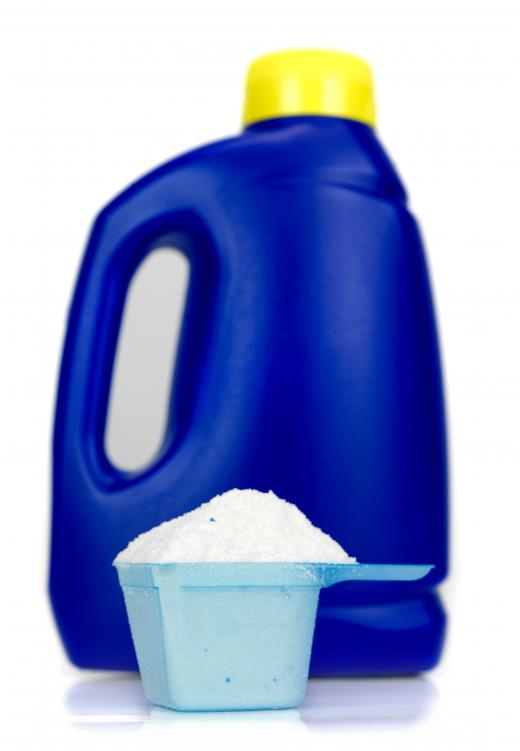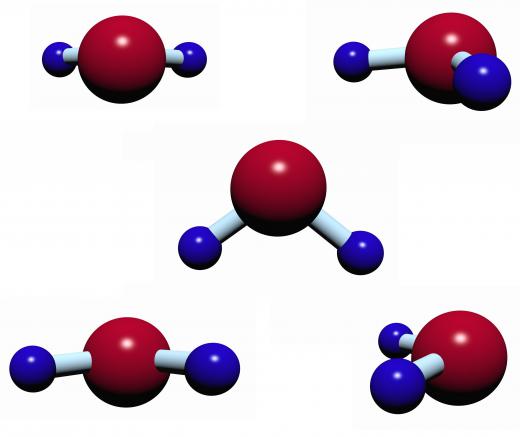What Is an Ionic Surfactant?
Surfactants are a category of substances that are used for various purposes, for example as detergents and emulsifiers. The molecules of a surfactant have one end, called the tail, which is insoluble in water but soluble in oil, while the other end, the head, is water soluble. These molecular properties mean surfactants can disperse oil in water, and can also be used to remove oil and dirt from fabrics, surfaces, and other objects. An ionic surfactant is a surfactant made up of molecules that have either negatively or positively charged heads: anionic surfactants have a negative charge, while cationic surfactants have a positive charge. Some common uses for ionic surfactants are as ingredients in soap, bathroom cleaners, disinfectants, stain removers and fabric softeners.
Water molecules and oil molecules usually repel each other. This is why oil rises to the top when added to water, and it is also why water by itself cannot effectively be used to clean up oil or grease. However, when an ionic surfactant or other type of surfactant is added to water, the surfactant molecules rise to the surface and act as an emulsifier, holding the water and oil together. This eventually disperses the oil in the water. The word surfactant is a combination of the words surface active agent, referring to this process.

The properties of an ionic surfactant vary depending on its charge. Anionic surfactants often create a lot of foam and have excellent cleaning capabilities. They are commonly used in shampoos, laundry detergents, and dishwashing liquids. Examples of this kind of negatively charged, ionic surfactant substances are phosphates, sulphates, and carboxylates, including alkyl carboxylates like soap.

Cationic surfactants are commonly used as fabric softeners and stain removers, especially for greasy stains. They are also added to household cleaning products because of their sanitizing and disinfectant properties. Examples of this type of positively charged, ionic surfactant substances are benzethonium chloride and cetylpyridinium chloride. There are also many kinds of nonionic surfactants that do not carry a charge.

One drawback of using an ionic surfactant is that because of its negative or positive charge, it attracts compounds made up of molecules carrying the opposite charge. This can make an ionic surfactant less effective at removing oil and grease. For example, anionic surfactants in a laundry detergent can attract positively charged calcium molecules in the water, reducing its capability to remove stains and dirt. To counteract this, one can add more detergent or use certain additives in the water.
AS FEATURED ON:
AS FEATURED ON:

















Discuss this Article
Post your comments